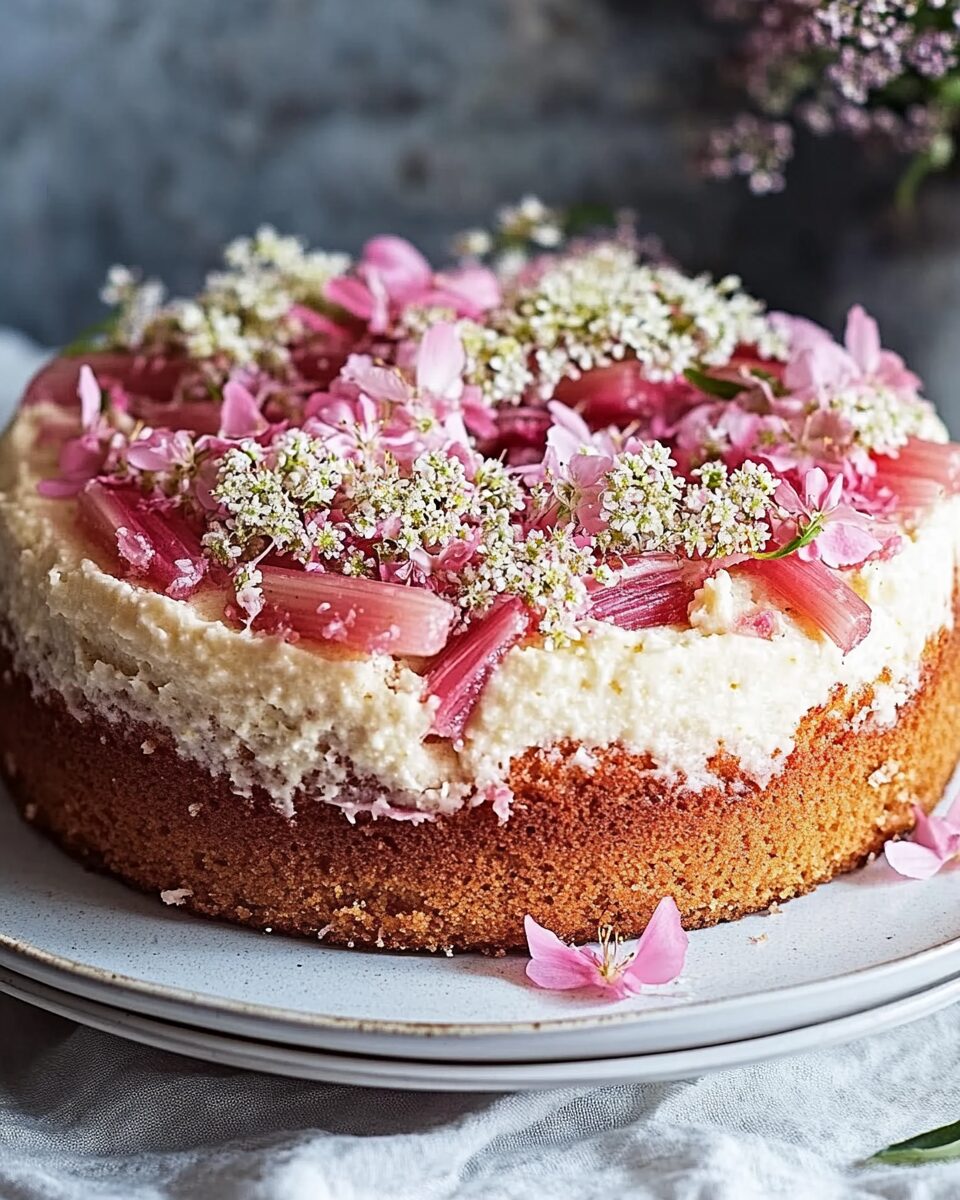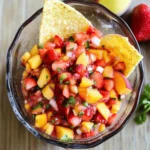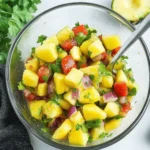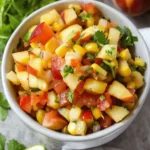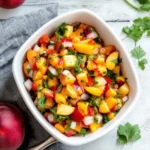A light and elegant cake that pairs tart rhubarb with fragrant elderflower, perfect for spring and summer gatherings. This beautifully layered dessert balances sweetness and floral notes with a soft, buttery sponge and a creamy elderflower frosting.
FULL RECIPE
Ingredients
- 250g rhubarb, trimmed and chopped
- 100g caster sugar (for rhubarb)
- 225g unsalted butter, softened
- 225g golden caster sugar
- 4 large eggs
- 225g self-raising flour
- 2 tbsp elderflower cordial
- Zest of 1 lemon
1.For the frosting
- 250g unsalted butter, softened
- 500g icing sugar, sifted
- 3 tbsp elderflower cordial
- 2 tbsp milk (if needed for consistency)
2.To decorate (optional)
- Extra rhubarb pieces or edible flowers
Directions
- Preheat the oven to 180°C (160°C fan) and grease and line two 20cm round cake tins.
- Place chopped rhubarb in a baking dish with 100g caster sugar. Roast for 15-20 minutes until soft, then cool completely. Drain off excess liquid.
- In a large bowl, cream together 225g butter and 225g golden caster sugar until light and fluffy.
- Add the eggs one at a time, beating well after each addition.
- Fold in the flour, lemon zest, and elderflower cordial until combined.
- Divide the batter evenly between the prepared tins and smooth the tops.
- Bake for 25-30 minutes or until a skewer inserted in the center comes out clean. Cool in the tins for 10 minutes, then transfer to wire racks to cool completely.
- For the frosting, beat 250g butter until creamy, then gradually add the icing sugar. Mix in elderflower cordial and milk if needed for a spreadable consistency.
- Place one cake layer on a plate and spread a layer of frosting on top. Scatter with roasted rhubarb.
- Top with the second cake and cover the entire cake with remaining frosting. Decorate as desired.
Nutritional Information
- Calories: 540 per slice
- Fat: 29g
- Saturated Fat: 18g
- Carbohydrates: 65g
- Sugars: 50g
- Protein: 4g
- Fiber: 1g
The Role of Rhubarb in Baking
Rhubarb has long been used in desserts, especially in countries with colder climates where it thrives in spring and early summer. Its tartness contrasts beautifully with the sweetness of sugar, making it an excellent ingredient for cakes, pies, and jams. While rhubarb is technically a vegetable, it is often treated like a fruit in recipes. Its distinct flavor profile adds a refreshing zing to baked goods, and when paired with elderflower, it creates a delicate yet bold flavor combination that is both unique and refreshing.
Elderflower: A Floral Touch
Elderflower is derived from the elder tree, which blooms in late spring. The small white flowers have a subtle yet aromatic scent that infuses baked goods with a light, floral fragrance. Elderflower’s flavor is often described as sweet and fragrant, with hints of pear and citrus. It has been used in cooking and beverages for centuries, often in the form of elderflower cordial, which is a popular ingredient in many desserts. When used in cakes, elderflower enhances the overall flavor profile by adding a floral dimension that pairs perfectly with the tang of rhubarb.
The Benefits of Homemade Cakes
Baking a cake from scratch, rather than purchasing one from a store, offers several benefits. Homemade cakes allow you to control the ingredients, ensuring that you are using fresh and high-quality products. This not only results in a more flavorful cake but also allows you to avoid unnecessary preservatives or artificial flavors that are often found in store-bought baked goods. Additionally, the process of baking a cake can be a rewarding and therapeutic experience. The aroma of a cake baking in the oven fills the home with a sense of warmth and anticipation, making it a perfect activity for anyone who enjoys spending time in the kitchen.
Choosing the Right Rhubarb for Your Cake
When selecting rhubarb for your cake, it is important to choose fresh, vibrant stalks. The stalks should be firm and free of any blemishes or signs of wilting. The color of the rhubarb varies depending on the variety, but generally, it should be a bright pink or red color, indicating that it is ripe and ready for baking. Avoid using rhubarb that has yellow or greenish stalks, as these tend to be less flavorful and can be quite tough. If you can, try to source your rhubarb from local farmers or markets for the best possible quality.
Roasting Rhubarb: A Flavorful Technique
One of the key steps in this recipe is roasting the rhubarb before incorporating it into the cake. Roasting helps to concentrate the rhubarb’s flavor while softening the texture, making it easier to blend into the cake. The natural sugars in the rhubarb caramelize during roasting, bringing out its sweetness and reducing its tartness. This technique results in a softer, more delicate rhubarb that enhances the overall texture of the cake. Be sure to drain off any excess liquid after roasting to avoid making the cake too soggy.
Why Choose Elderflower Cordial?
Elderflower cordial is a convenient and flavorful ingredient that brings the taste of elderflower into your kitchen with ease. It is made by infusing elderflowers with sugar, water, and citric acid, resulting in a sweet, syrupy liquid that is perfect for adding to cakes, drinks, and desserts. The cordial adds a natural sweetness and floral aroma to the cake, complementing the tartness of the rhubarb. Using elderflower cordial instead of fresh elderflowers allows you to enjoy the flavor of the flowers without the need to gather them yourself, making it an accessible ingredient for anyone looking to bake a rhubarb and elderflower cake.
The Importance of Room Temperature Ingredients
When baking cakes, it is crucial to use ingredients that are at room temperature. Cold butter or eggs can result in a lumpy batter that does not rise properly, resulting in a dense and heavy cake. Allow your butter and eggs to sit at room temperature for about 30 minutes before you begin baking. This ensures that the ingredients mix together evenly, resulting in a smooth, airy batter. Room temperature ingredients also help the cake rise evenly and achieve a light, fluffy texture.
Baking Tips for a Perfect Cake
Baking the perfect cake requires attention to detail. Be sure to measure your ingredients accurately to ensure that your cake turns out just as expected. Using a kitchen scale to weigh your ingredients can help you achieve greater precision than measuring by volume. It is also important not to overmix the batter, as this can lead to a tough cake. Mix the ingredients just until they are combined to avoid overworking the gluten in the flour. Finally, check the cake’s doneness by inserting a skewer into the center. If it comes out clean, the cake is ready to be removed from the oven.
Frosting with Elderflower: A Perfect Pairing
The elderflower frosting is what truly elevates this cake, creating a luxurious and creamy finish that ties together the flavors of the rhubarb and elderflower. The frosting is made by combining softened butter, icing sugar, and elderflower cordial. The butter gives the frosting a rich, smooth texture, while the icing sugar adds sweetness and helps to achieve a light, fluffy consistency. The elderflower cordial infuses the frosting with the same floral notes that are found in the cake, creating a cohesive flavor profile from top to bottom.
Decorating the Cake: Personalizing Your Creation
While the cake is delicious on its own, decorating it with extra rhubarb or edible flowers can add a beautiful touch. Edible flowers, such as pansies or violets, complement the floral notes in the cake and give it a stunning, natural appearance. You can also use fresh rhubarb pieces as a decorative element on top of the frosting, creating a colorful contrast with the soft, creamy white icing. The decorations not only make the cake look more appealing but also add an extra layer of flavor and texture.
Serving Suggestions: Enjoying Your Cake
Rhubarb and elderflower cake is versatile and can be served in various settings. It is a perfect dessert for afternoon tea, served alongside a cup of Earl Grey or green tea. The cake also makes a delightful dessert for special occasions, such as birthdays, Easter, or Mother’s Day. It can be enjoyed as a light snack during the warmer months, or paired with a scoop of vanilla ice cream for a more indulgent treat. If you have leftovers, the cake can be stored in an airtight container for a few days, although it is best enjoyed fresh.
Storage Tips for Leftovers
To ensure that your rhubarb and elderflower cake stays fresh for as long as possible, store it in an airtight container at room temperature. If you want to extend its shelf life, you can also refrigerate the cake, although this may slightly alter the texture of the frosting. For longer storage, you can freeze the cake in slices. Wrap each slice tightly in plastic wrap and place it in a freezer-safe bag. When you’re ready to enjoy it, simply thaw the slices at room temperature or warm them in the oven for a few minutes.
Why Rhubarb is a Nutrient-Rich Ingredient
Rhubarb is not only delicious but also packed with nutrients. It is a low-calorie vegetable that is high in fiber, making it a great option for those looking to add more fiber to their diet. Rhubarb also contains a variety of vitamins and minerals, including vitamin K, vitamin C, and calcium. While it should be consumed in moderation due to its naturally high oxalate content, rhubarb is a healthy addition to many recipes, including this rhubarb and elderflower cake.
The Significance of Rhubarb in Spring Baking
Rhubarb is often associated with spring, as it is one of the first crops to be harvested after the winter months. Its vibrant color and tangy flavor make it a symbol of renewal and fresh beginnings, which is why it is commonly used in springtime baking. This cake, with its combination of rhubarb and elderflower, captures the essence of the season, offering a light and refreshing dessert that celebrates the flavors of spring.
The Versatility of Rhubarb in Baking
Rhubarb is an incredibly versatile ingredient that can be used in a wide variety of baked goods. In addition to cakes, it works well in pies, crumbles, tarts, and jams. Rhubarb can also be used in savory dishes, such as sauces or compotes, where its tangy flavor provides a nice contrast to rich meats. The ability to pair rhubarb with both sweet and savory elements makes it a valuable ingredient for any baker or home cook to have in their repertoire.
Why Elderflower is Gaining Popularity in Baking
Elderflower has become increasingly popular in the world of baking due to its unique flavor and versatility. Its delicate, floral notes make it a perfect addition to cakes, cookies, and other desserts. Elderflower has also gained a reputation as a trendy ingredient, thanks to its association with high-end cuisine and artisanal food products. Many bakers have begun to experiment with elderflower in a variety of forms, from elderflower syrup to dried flowers, to bring a touch of elegance and sophistication to their creations.
Health Benefits of Elderflower Cordial
Elderflower cordial offers more than just a delightful flavor. It has a long history of use in traditional medicine for its potential health benefits. Elderflower is believed to have anti-inflammatory properties and may help boost the immune system. It has also been used to treat colds, coughs, and sinus issues. While elderflower cordial should not be considered a medicinal remedy, its natural ingredients and pleasant taste make it a great addition to a healthy diet.
Conclusion
The rhubarb and elderflower cake is the perfect combination of flavors, offering a refreshing and indulgent treat for any occasion. Whether you are celebrating a special event or simply enjoying a quiet afternoon, this cake provides a light yet flavorful dessert that captures the essence of spring. With its balance of tart rhubarb and fragrant elderflower, this cake is sure to become a favorite in your baking repertoire.

